Located in the heart of the North Caucasus, Pyatigorsk is one of the most impressive cities in Russia with its historical richness, natural beauty, and healing thermal springs. This city, which carries the traces of the poet Mikhail Lermontov, offers visitors a unique experience with both its literary heritage and its nature-integrated structure. Situated at the foot of Mount Mashuk, Pyatigorsk has gained fame for its mineral wealth and has been an important center for health tourism for centuries. In this city full of lakes, parks, monuments, and historical buildings, it is possible to encounter a different story at every step.
From Tsvetnik Park to Lake Proval, from Lermontov’s House to the Bronze Eagle Statue, Pyatigorsk brings together culture and nature. You can take a cable car to the summit and enjoy the panoramic view, relax in historic baths, or stroll through the streets to discover architectural beauties. With rich museum collections, art galleries, and hiking trails, this city appeals to both history enthusiasts and adventure seekers and is like a hidden gem waiting to be discovered in Russia.
1. Lake Proval

Lake Proval (Russian: Провал) is a natural underground lake located in the city of Pyatigorsk, Russia, on the southeastern slope of Mount Mashuk. This impressive karst formation is approximately 11 meters deep and 15 meters in diameter. The water temperature ranges between 26 and 42°C, and due to its high hydrogen sulfide content, the lake appears turquoise. With these features, Lake Proval stands out for both its natural beauty and historical significance.
Visitors can reach the lake by passing through a 47-meter-long tunnel. At the entrance of the tunnel, there is a statue of the famous literary character Ostap Bender and bronze lion sculptures. Inside the lake area, there is also a niche containing an icon of Saint Pantaleon, which is worth seeing. Lake Proval attracted the attention of famous writers such as Mikhail Lermontov, Alexander Pushkin, and Leo Tolstoy, who mentioned this mysterious place in their works. Today, Lake Proval is one of the most popular tourist attractions in Pyatigorsk, offering an unforgettable experience for both nature and history lovers.
2. Tsvetnik Park (Flower Garden)

Tsvetnik Park (Russian: Цветник) is one of the oldest and most elegant parks in Pyatigorsk. It was established in 1829 through the reclamation of a marshy area formed by hydrogen sulfide springs. By the mid-19th century, it had become the center of spa life in Pyatigorsk.
After a comprehensive restoration in 2019, the park was reopened to visitors.
The park takes its name from its colorful flower gardens and is filled with walking paths, historical structures, and natural beauty. It includes important landmarks such as the Lermontov Gallery, Diana’s Grotto, the Yermolov and Lermontov baths, the Bronze Eagle statue, and the mineral water drinking gallery. The park was also frequently visited by the famous Russian poet Mikhail Lermontov.
Tsvetnik Park is a peaceful area that reflects the historical and cultural fabric of Pyatigorsk while being intertwined with nature. Visitors can take a walk in the park, explore historical buildings, and feel the unique atmosphere of the city.
3. Lermontov Gallery

The Lermontov Gallery is an impressive structure located in Tsvetnik Park, Pyatigorsk, built in 1901. Dedicated to the memory of the famous Russian poet Mikhail Lermontov, the gallery stands out with its elegant combination of glass and metal. Its architecture features artistic details reflective of the era’s style, particularly its stained-glass windows and carved ornaments. The construction date, July 15, coincides with the anniversary of Lermontov’s death.
The Lermontov Gallery is more than just an architectural landmark—it also serves as a cultural center. Hosting concerts, exhibitions, and various artistic events, it contributes to the cultural life of the city. Situated in the scenic Tsvetnik Park, which is filled with natural beauty and historical structures, the gallery offers visitors a pleasant atmosphere. The Lermontov Gallery is a must-see spot for those wishing to explore the historical and cultural essence of Pyatigorsk.
4. Aeolian Harp (Eol Harp)

The Aeolian Harp (Eol Harp) is a historical rotunda located on the slopes of Mount Mashuk in Pyatigorsk, built in 1831. With its white columns and dome, this structure has become one of the city’s symbols. It takes its name from the Aeolian harp, a musical instrument that produces soft melodies when played by the wind. The location offers a panoramic view of Pyatigorsk and its surroundings, allowing visitors to enjoy a bird’s-eye view of the city’s beauty.
The Aeolian Harp is more than just an architectural structure—it is a part of Pyatigorsk’s cultural and historical fabric. Frequently visited by the poet Mikhail Lermontov, this place is also featured in his works. The area where the structure stands is ideal for nature walks and photography. Visitors can both explore a historical site and enjoy the natural surroundings here.
5. Mount Mashuk and Summit Markers

Mount Mashuk is a striking natural wonder rising to the north of Pyatigorsk and is one of the city’s most iconic landmarks. With an elevation of approximately 993 meters, the mountain stands out for both its natural beauty and historical significance. Visitors who reach the summit are rewarded with a panoramic view of Pyatigorsk. Additionally, directional markers located at the summit show the directions and distances to various cities, offering an interesting experience.
Access to Mount Mashuk is quite easy. Visitors can reach the summit by cable car or by hiking from the foothills. From the summit, in addition to the directional markers, there is also a breathtaking view of Mount Elbrus. With these features, Mount Mashuk is an essential destination for nature lovers and photography enthusiasts.
6. Lermontov Monument and Duel Site

The Lermontov Monument and Duel Site are located on the slopes of Mount Mashuk in Pyatigorsk, marking the place where one of Russia’s most prominent literary figures, Mikhail Lermontov, lost his life in a duel in 1841. The poet was fatally shot by his former schoolmate Nikolai Martynov during the duel. Although the exact location of the duel was initially unmarked, in 1878, local photographers Grigory Raev and Engel identified the spot based on accounts from elderly residents. In 1881, a modest 70 cm Mashuk stone obelisk was erected at the site, engraved with the words “Mikhail Lermontov. July 15, 1841.” In 1901, this was replaced by a larger stone and concrete obelisk.
The Lermontov Monument is located in the historic center of Pyatigorsk, on a small elevation. It is the first monument in Russia dedicated to a poet and was built in 1870 on the suggestion of Peter Martyanov. The design competition was won by renowned Russian sculptor Alexander Opekushin. The monument features a bronze statue of the poet seated thoughtfully, with his back to Mount Mashuk and facing Mount Elbrus. The total height of the monument is 5.65 meters, with the statue itself standing at 2.35 meters.
These two monuments are important sites reflecting the cultural and historical fabric of Pyatigorsk. Visitors can see traces of the life of one of Russia’s great poets while enjoying the city’s natural beauty.
7. Bronze Eagle Statue
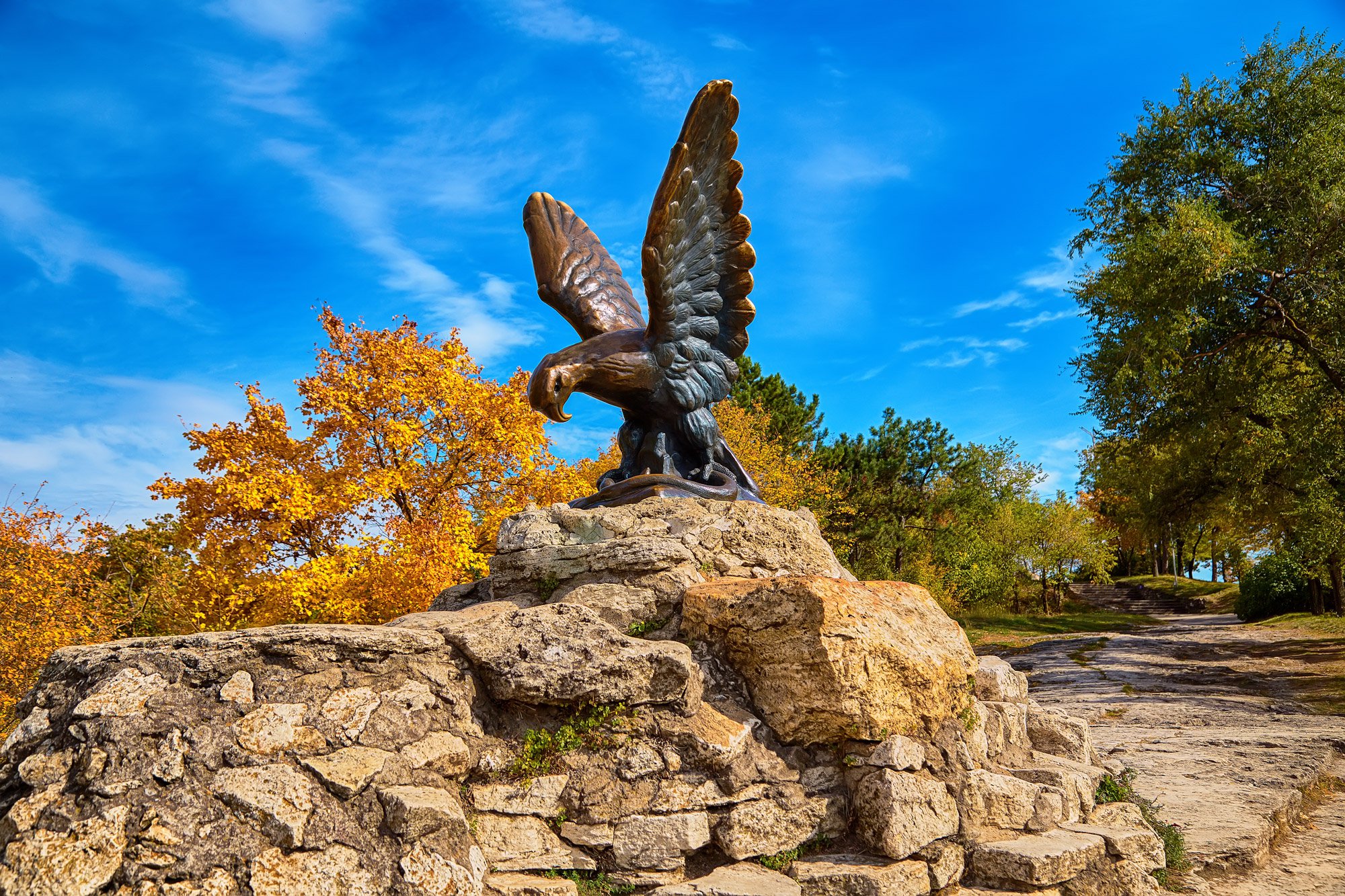
The Bronze Eagle Statue is an impressive monument considered one of the symbols of Pyatigorsk. Erected in 1901, the statue depicts an eagle clutching a snake in its talons and has become an emblem of the city. It is located near Tsvetnik Park, on the slopes of Mount Mashuk, offering visitors a blend of historical and natural beauty.
This monument symbolizes Pyatigorsk’s spa culture and natural wealth. The eagle represents strength and freedom, while the snake symbolizes illness and evil. This depiction reflects the healing power of the city’s mineral waters. Visitors can take photos in front of the striking statue and enjoy the surrounding natural scenery.
8. Mikhaylo-Arkhangelsky Cathedral
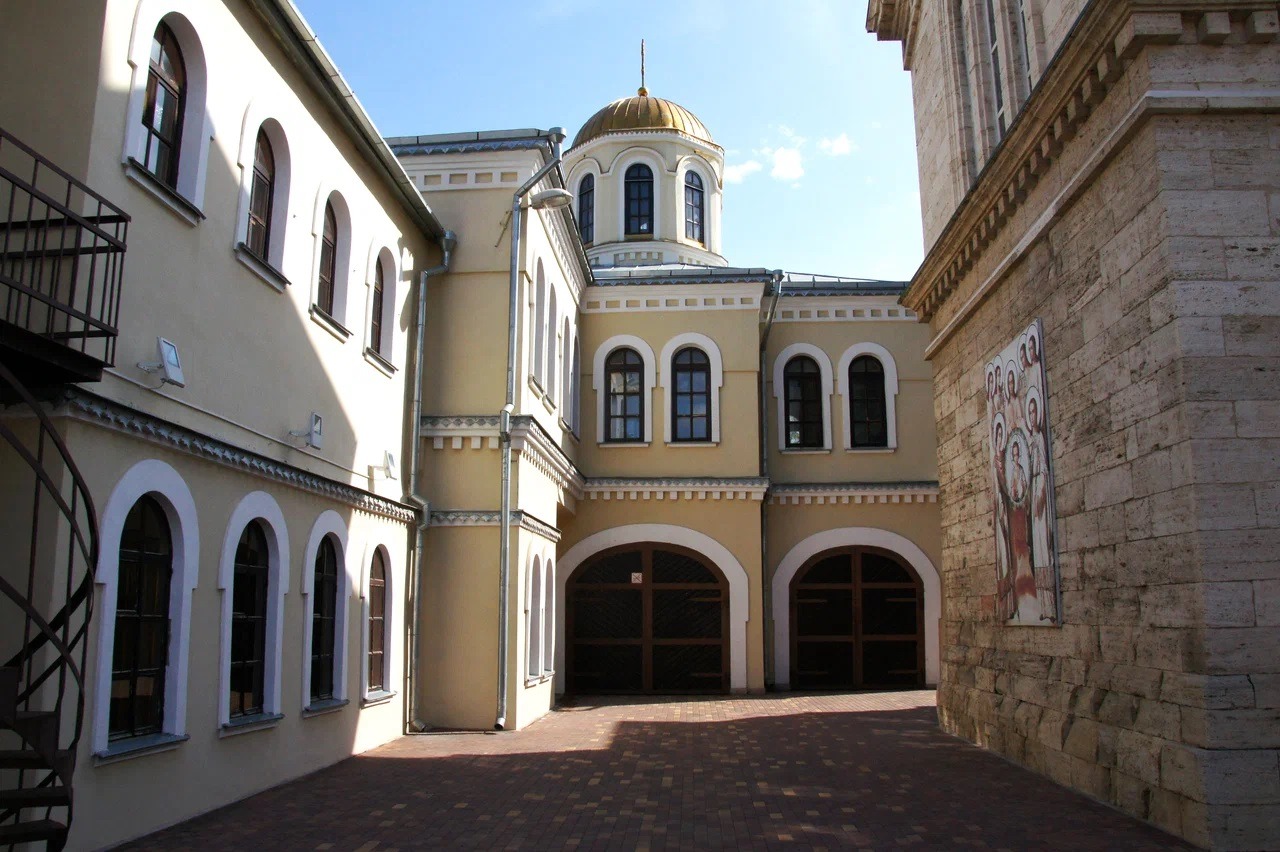
Mikhaylo-Arkhangelsky Cathedral (Михаило-Архангельский собор) is a significant Orthodox place of worship located in the city of Pyatigorsk. Construction of the cathedral began in 1884 with contributions from the local people, and it was consecrated and opened for worship in 1898. The cathedral is an important part of the religious and cultural heritage of Russia’s Caucasus region.
During the Soviet era, like many religious structures, Mikhaylo-Arkhangelsky Cathedral was closed and repurposed for different uses. However, in 1990, following the dissolution of the Soviet Union, the cathedral was returned to the Russian Orthodox Church and restoration efforts began. After a comprehensive restoration, it was re-consecrated and reopened for worship in 1998.
The cathedral’s architecture reflects traditional Russian Orthodox church design. Its main dome and bell tower give a distinctive character to the city’s skyline. Inside, intricate iconostases and religious frescoes stand out. The cathedral is not only a place of worship but also an important stop for visitors wishing to explore Pyatigorsk’s historical and cultural fabric.
9. Lake Tambukan

Lake Tambukan is a salty and shallow lake located about 8 kilometers southwest of Pyatigorsk, on the border between Stavropol Krai and the Kabardino-Balkaria Republic. Covering an area of approximately 1.87 km², the lake has a depth ranging between 1.5 and 3.1 meters. It is fed by the Etoka Stream and rainwater and lies in a closed basin with no outlet. Tambukan Lake is especially famous for its healing mud, which has been used for therapeutic purposes in spa centers around Yessentuki since 1886. Renowned writers such as Anton Chekhov and Leo Tolstoy also benefited from the healing properties of this mud.
The lake is often referred to as the “Dead Sea of Pyatigorsk” and is known for its effectiveness in treating skin conditions and musculoskeletal disorders. Visitors can access a small beach area near the southern part of the lake via the village of Etoka, where they can enjoy a picnic and swim. However, due to the high mineral content of the water, prolonged swimming is not recommended. Since the area around the lake is a nature reserve, access is only permitted from designated spots. Lake Tambukan is an important attraction in Pyatigorsk, both for its natural beauty and its role in health tourism.
10. Lenin Monument

The Lenin Monument is an impressive statue located in Lenin Square, the largest square in Pyatigorsk. Erected in 1971, this bronze statue depicts Vladimir Lenin in a classic pose with his coat billowing in the wind. The pedestal is made of red granite and reflects the architectural aesthetics of the Soviet era.
Lenin Square is not limited to just this monument; it is also an important area that reflects Pyatigorsk’s historical and cultural character. At the lower end of the square, there is a musical fountain, while at the back, a rectangular pool known as the “Bowl of Tears” and the “Eternal Flame,” lit in 1972, can be found. Additionally, the equestrian statue of General Yermolov, a hero of the 1812 War, is also located in this square.
The Lenin Monument and the surrounding memorials carry significant traces of Pyatigorsk’s Soviet past and offer visitors a historical journey.
11. Diana’s Grotto (Peshchera Diany)
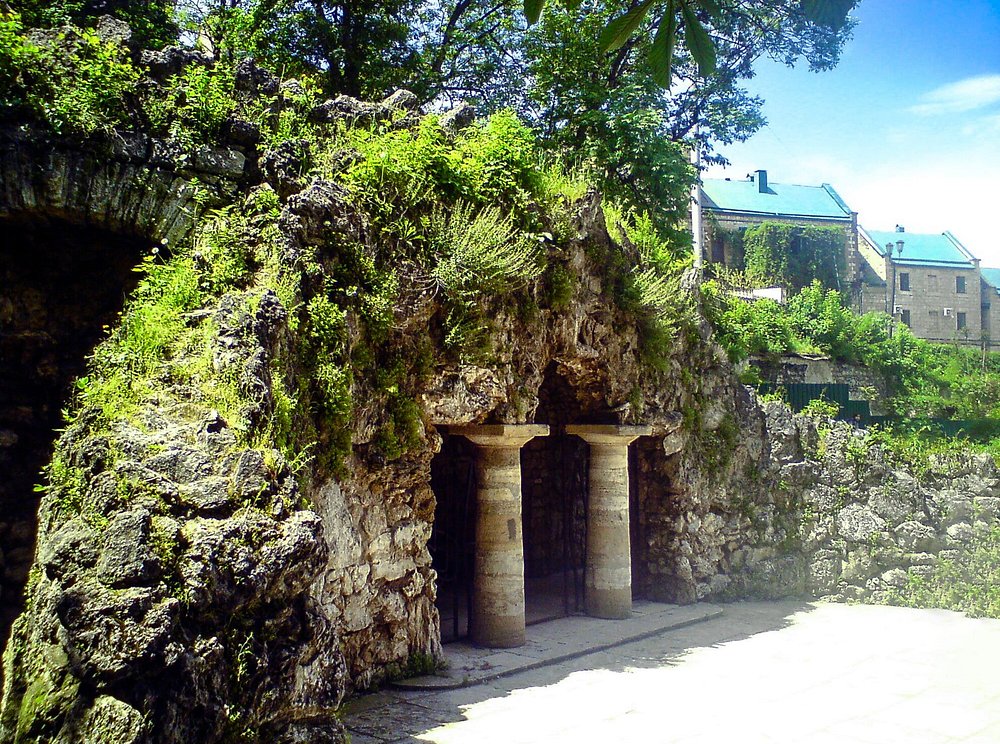
Diana’s Grotto (Russian: Пещера Дианы) is an artificial cave located in Tsvetnik Park, one of the oldest and most elegant parks in Pyatigorsk. Built in the 1830s, this cave is named after Diana, the Roman goddess of hunting and nature. The cave was created by carving into natural rock and features a two-columned entrance on its front façade. This architectural design is inspired by ancient Roman architecture.
Diana’s Grotto draws attention not only for its architectural beauty but also for its historical significance. The famous Russian poet Mikhail Lermontov frequently visited this grotto, and it is mentioned in his works. Today, the grotto is a popular spot for both locals and tourists. Visitors can relax in its cool atmosphere and enjoy the surrounding natural beauty.
12. Emmanuels Baths (Emmanuilovskie Vanny)

Emmanuels Baths (Emmanuilovskie Vanny) is a significant health complex located in the historical center of Pyatigorsk and is one of the cornerstones of the city’s spa culture. Established in the early 19th century through the initiative of General Georgy Emmanuel, this facility is known for its healing mineral waters.
Emmanuels Baths is particularly famous for its hydrogen sulfide thermal waters, which are effective in the treatment of rheumatic conditions, skin diseases, and nervous system disorders.
The facility also stands out with its historical architecture. The buildings, constructed from stone and brick, are fine examples of classical Russian spa architecture. Visitors can enjoy traditional baths as well as benefit from modern spa services. Emmanuels Baths is an important destination for health tourism in Pyatigorsk and attracts both locals and tourists.
13. Failure Monument (Pam’yatnik Neudachi)

The “Failure Monument” (Pam’yatnik Neudachi) is a statue located at the entrance of Lake Proval in Pyatigorsk, Russia, dedicated to the literary character Ostap Bender. This statue depicts Bender holding a few playing cards in his hand, representing the clever and humorous nature of the character from the satirical novel The Twelve Chairs by authors Ilya Ilf and Yevgeny Petrov. The sculpture captures the spirit of the novel and allows visitors to experience its atmosphere.
The statue is situated at the entrance to Lake Proval, one of Pyatigorsk’s most popular tourist spots. Visitors often take photos with the Ostap Bender statue, enjoying the chance to interact with this iconic literary figure. Additionally, the nearby Lake Proval and its surrounding natural beauty offer visitors an enjoyable experience.
14. Pyatigorsk Cable Car

The Pyatigorsk Cable Car is a popular mode of transportation in the city of Pyatigorsk, Russia, used by visitors who wish to explore the surrounding natural beauty. Opened in 1971, the cable car provides easy access to the summit of Mount Mashuk. Covering a distance of 964 meters in about three minutes, it offers passengers panoramic views of Pyatigorsk.
Upon reaching the summit of Mount Mashuk, visitors are greeted with an impressive observation point. From here, it is possible to view the wide landscape of Pyatigorsk and the silhouette of the Caucasus Mountains. At the summit, there are also directional signs indicating the directions and distances to various cities. This experience provides unforgettable memories for nature lovers and photography enthusiasts.
15. Respublikanskiy Museum Krayevedeniya
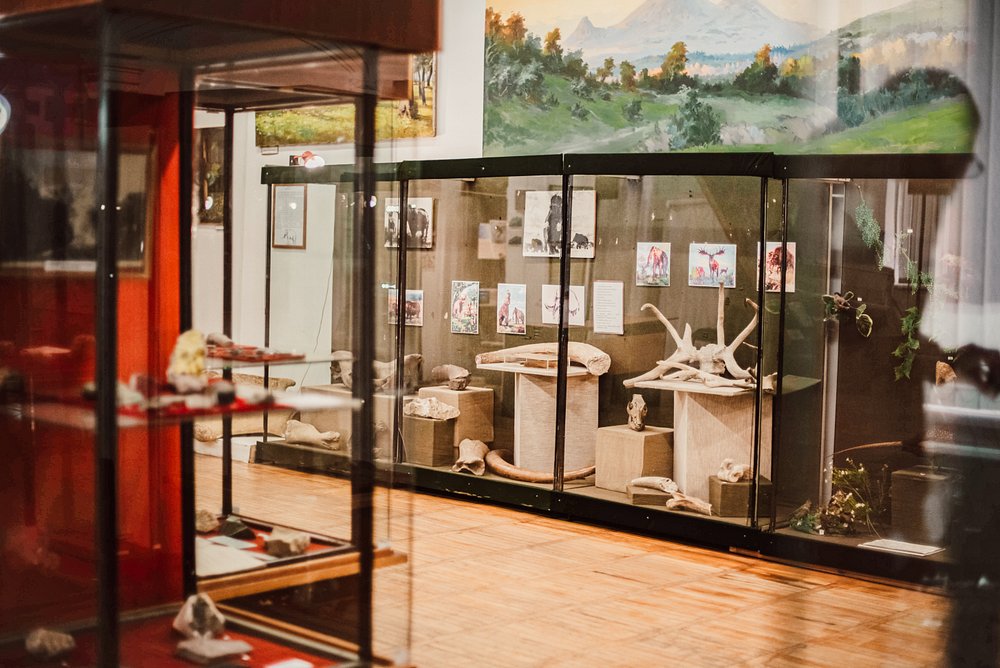
The Respublikanskiy Museum Krayevedeniya (Republican Museum of Local History) is one of the oldest and most comprehensive cultural institutions in Pyatigorsk. Founded in 1903 by the Caucasian Mountaineering Society, the museum operates in a historic building constructed in the early 20th century. It is located in the center of Pyatigorsk, at 2 Bratyev Bernardatstsi Street, near the entrance to Tsvetnik Park. Visiting hours are generally from 09:00 to 18:00, and the museum is closed on Wednesdays. Admission is 150 rubles for adults, 70 rubles for students and pensioners, and free for children under 16.
The museum’s collection contains over 130,000 items, shedding light on the region’s archaeological, ethnographic, and natural history. Highlights include a skull of a southern elephant estimated to be around one million years old, rare books, photographs, manuscripts from the 18th and 19th centuries, and ethnographic artifacts reflecting the traditional lifestyles of the peoples of the Caucasus. The museum also houses a 17,000-volume library focused on the Caucasus. Through exhibitions focusing on themes such as natural history, regional history, and cultural heritage, visitors can explore the rich past of Pyatigorsk and its surroundings.
Contact Information:
- Address: 2 Bratyev Bernardatstsi Street, Pyatigorsk, Russia
- Phone: +7 (8793) 35-23-64
- Website: pkm1903.ru
This museum is a key destination for visitors seeking to gain a deep understanding of Pyatigorsk’s historical and cultural fabric.
16. Lermontov’s House-Museum (Dom-Muzey Lermontova)
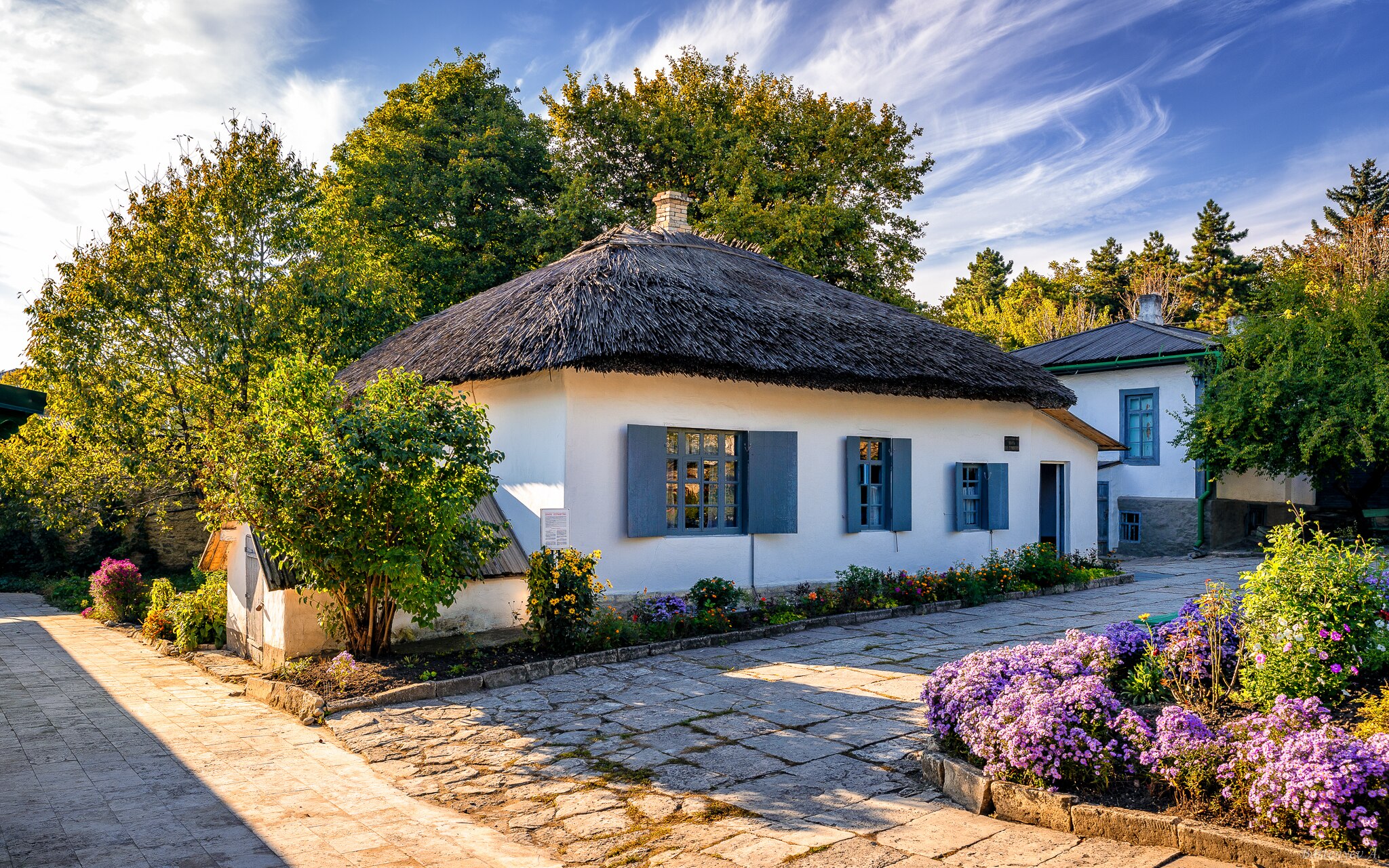
Lermontov’s House-Museum (Dom-Muzey Lermontova) is a historic building where one of the leading romantic poets of Russian literature, Mikhail Lermontov, spent the final months of his life before tragically dying in a duel in 1841. Located in the center of Pyatigorsk at 4 Lermontov Street, the museum was established in 1912 and is considered one of the oldest literary museums in Russia.
The museum complex consists of four historic buildings: the original house where Lermontov lived, the house of General Pyotr Verzilin, the house of Alexander Alyabyev, and the house of V.P. Umanov. Visitors can explore rooms furnished with the poet’s personal belongings, manuscripts, period furniture, and works of art, experiencing the atmosphere of the 19th century. The museum also hosts cultural events, exhibitions, and literary commemorations throughout the year to preserve Lermontov’s legacy.
Visitor Information:
- Address: 4 Lermontov Street, Pyatigorsk, Russia
- Phone: +7 (8793) 39-12-23
- Official Website: домиклермонтова.рф
This museum is a must-visit in Pyatigorsk for both literature enthusiasts and history lovers.
17. Pyatigorsk Musical Fountain
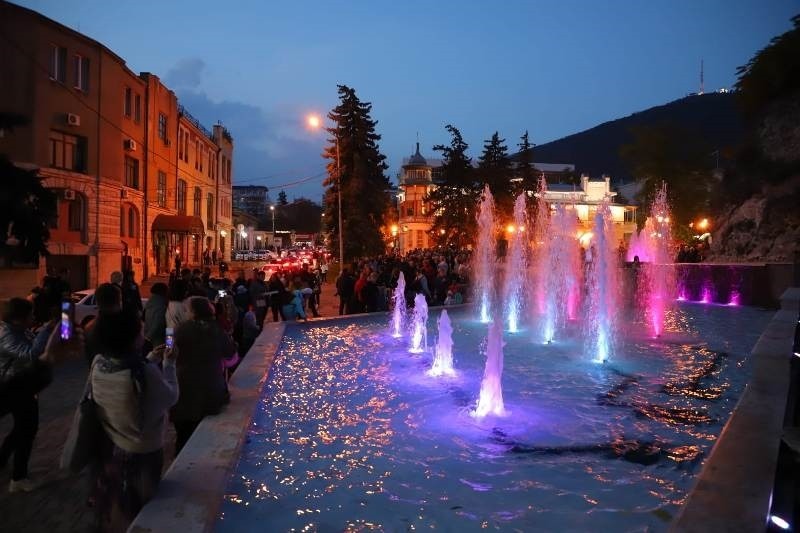
The Pyatigorsk Musical Fountain is an impressive water show located at the lower end of Lenin Square, the city’s largest square, in front of the city hall. This fountain captivates visitors with its shows in which water jets move in synchronization with music and are enhanced by colorful lighting. These shows begin after sunset and are especially popular during the summer months, attracting both locals and tourists.
Right behind the Musical Fountain is an honorary walkway featuring the names of Pyatigorsk’s honored citizens. The square also hosts significant monuments such as the Lenin Monument, the equestrian statue of General Yermolov—a hero of the War of 1812—and the Eternal Flame, which was lit in 1972. This area offers a rich historical and cultural atmosphere, providing visitors with a pleasant experience.
18. Goryachaya Gora (Hot Mountain)

Goryachaya Gora, meaning “Hot Mountain,” is the area where Pyatigorsk’s oldest thermal springs are located. It gets its name from the hot mineral waters emerging from underground. This area is considered both a historical and natural treasure. The spa buildings and stone pathways established during the Tsarist Russia era are still standing. The area is also known as one of the routes frequently walked by Lermontov.
While walking along the slopes of the hot mountain, visitors can feel the effect of the healing waters and enjoy pleasant moments on the surrounding hiking trails. The historical baths located here (such as the Lermontov Bath) are also notable for their architectural features. This area, where nature and history intertwine, is a wonderful discovery point for those seeking a peaceful and authentic atmosphere in Pyatigorsk.
19. Highlands and Nature Hiking Trails

Pyatigorsk is a city located at the foothills of the Caucasus and is famous for its natural beauty. It offers various routes for hiking and mountaineering enthusiasts. Here are some popular hiking trails around Pyatigorsk:
1. Mount Mashuk (993 m)
The symbol of the city, Mount Mashuk, features trails of varying difficulty. Zigzagging paved roads, forest paths, and routes like the “Bernardazzi Trail” provide options for those wishing to reach the summit. From the top, visitors can enjoy panoramic views of Pyatigorsk and, on clear days, see Mount Elbrus. The summit can also be accessed by cable car.
2. Mount Beshtau (1401 m)
The highest point in the region, Mount Beshtau, stands out with its five peaks. Trails passing through forested areas offer both a physical challenge and a nature-immersive experience. From the summit, one can view surrounding towns and the stunning Caucasus landscape.
3. Yutsa and Jutsa Mountains
Located near the village of Etoka, these mountains are ideal for shorter and moderately difficult hikes. The slopes of Mount Yutsa are also used by paragliders. Hikes in this area are suitable for those seeking solitude in nature.
4. Golden Kurgan
This hill, located near the village of Tambukan, is about 884 meters high. The hiking route consists of gently sloping paths, and from the summit, visitors can enjoy views of the surrounding mountains.
20. Day Trip Opportunity to Kislovodsk
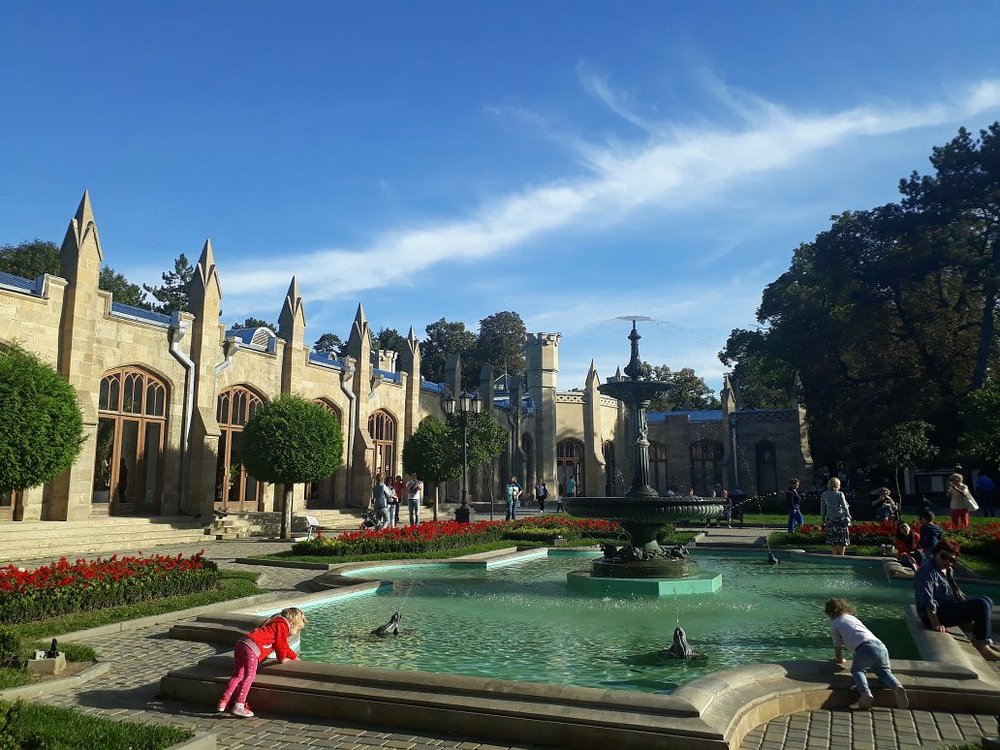
Planning a day trip from Pyatigorsk to Kislovodsk is quite easy thanks to the short distance between these two beautiful spa towns of the Caucasus and the convenient transportation options available. The approximately 36 km distance can be covered in 40 to 60 minutes by various means.
🚍 Transportation Options
Bus: There are 5 daily departures from Pyatigorsk Bus Terminal to Kislovodsk Bus Terminal. The journey takes around 48 minutes, and ticket prices range from 190 to 260 RUB.
Train: From Pyatigorsk Train Station, there are 4 train services to Kislovodsk daily. The travel time is about 51 minutes, and ticket prices range from 110 to 1,700 RUB.
Car Rental or Taxi: For those traveling by private car, the trip takes about 42 minutes and costs approximately 265 to 383 RUB. Taxi fares range from 850 to 1,100 RUB.
🌿 Places to Visit in Kislovodsk
Kislovodsk National Park: One of the largest urban parks in Europe, this 966-hectare park is famous for its walking trails, scenic viewpoints, and natural beauty.
Narzan Gallery: Located in the city center, this historic site offers the opportunity to taste different mineral water sources.
Kurortny Boulevard: Surrounded by historic buildings, cafés, and shops, this boulevard is the social heart of the city.
Cable Car: Used to reach the upper parts of the park, the cable car offers visitors stunning views.
🕒 Suggested Day Trip Itinerary
- 08:00 – Departure from Pyatigorsk to Kislovodsk
- 09:00 – Walk through Kislovodsk National Park and cable car ride
- 12:00 – Visit to Narzan Gallery and mineral water tasting
- 13:00 – Lunch at a local restaurant
- 14:30 – Walk and shopping on Kurortny Boulevard
- 16:00 – Return to Pyatigorsk
This itinerary provides ample time to explore the natural and cultural richness of Kislovodsk. You can customize the plan based on your personal interests.
